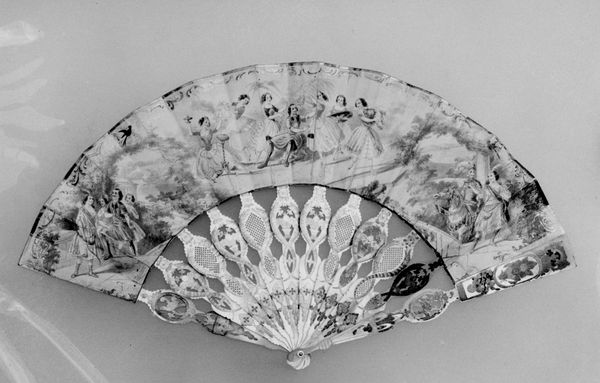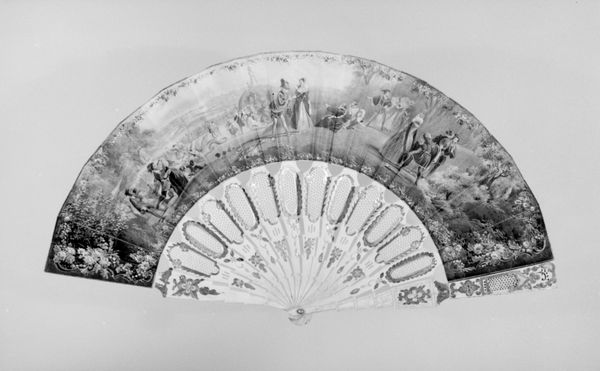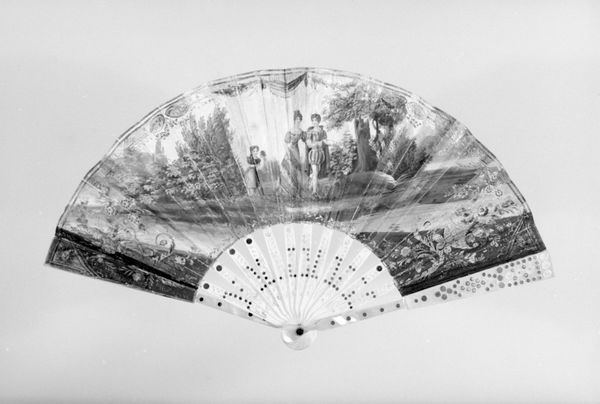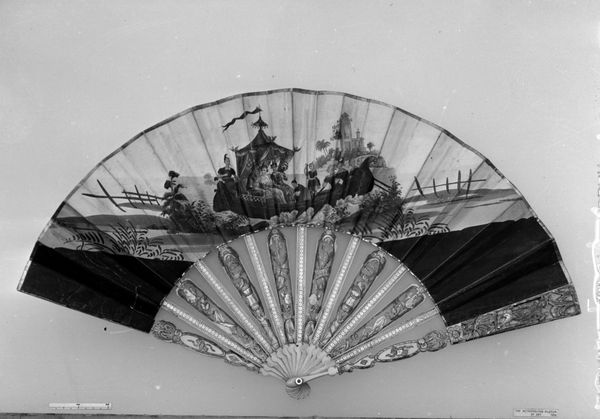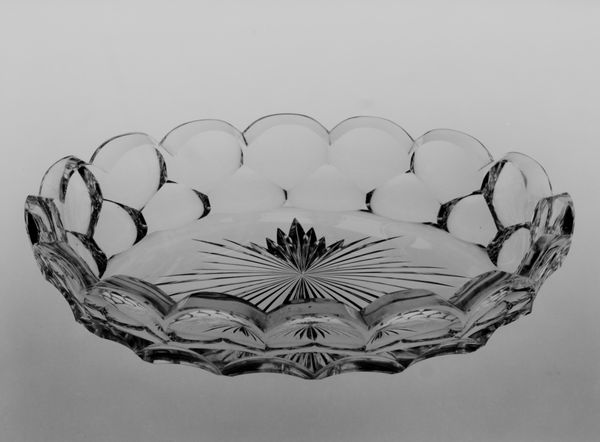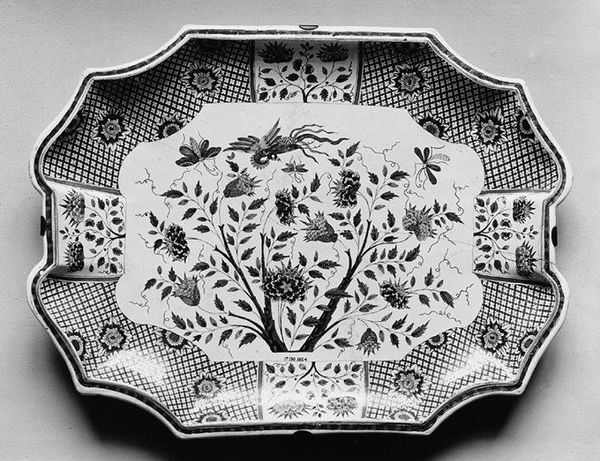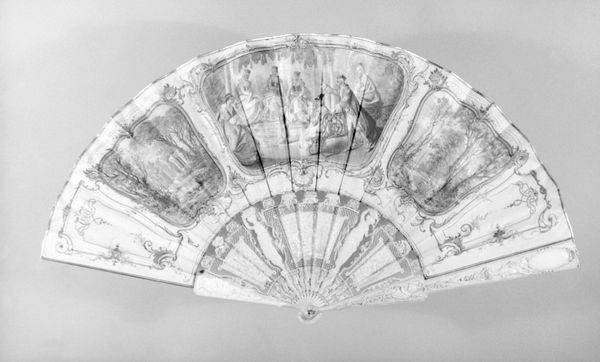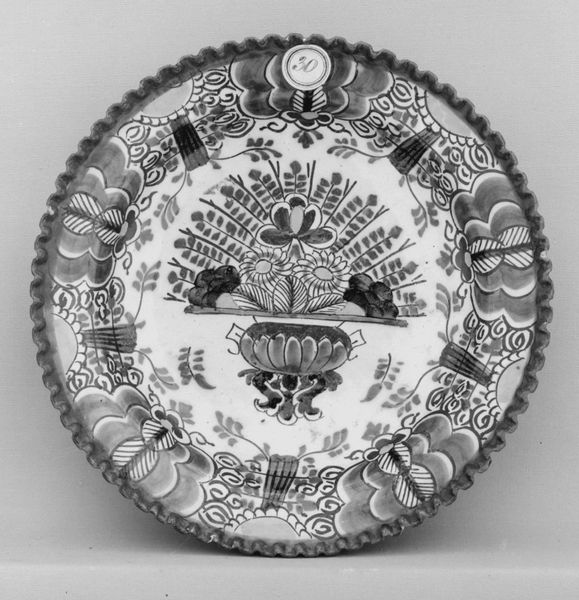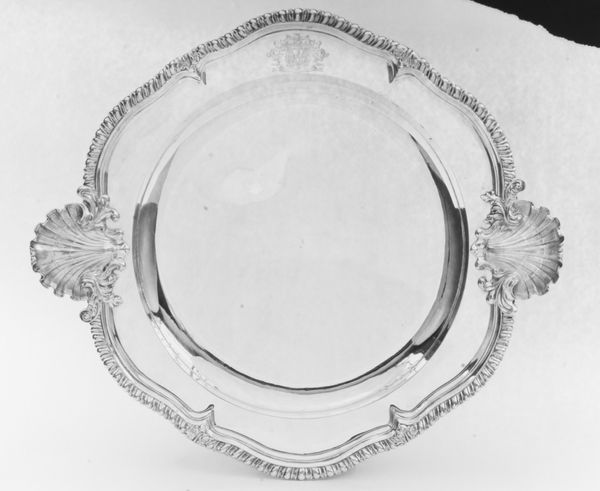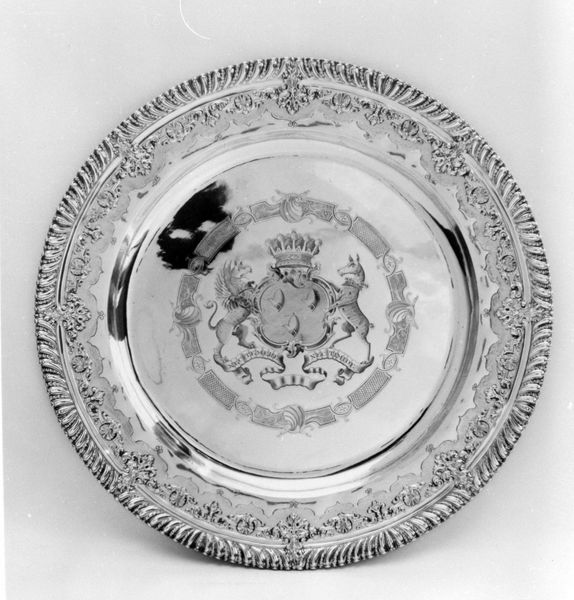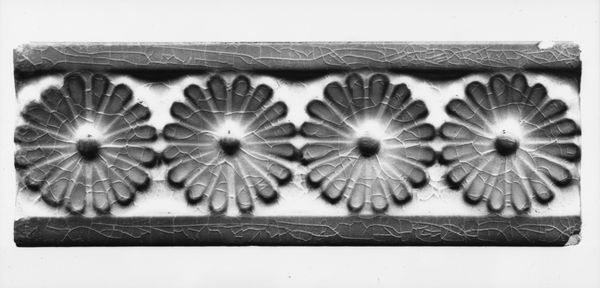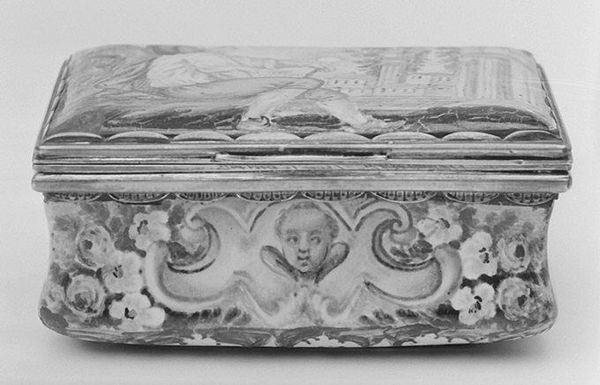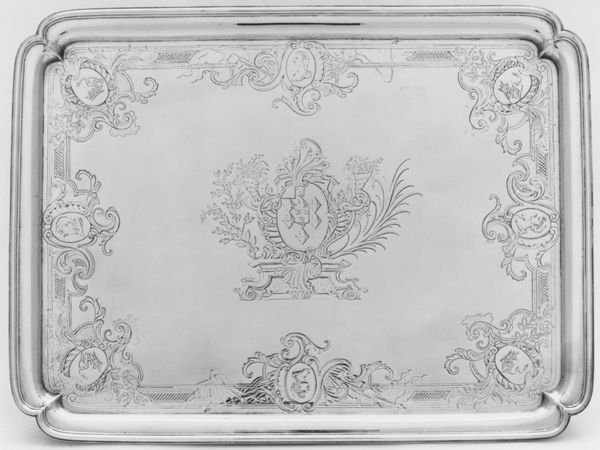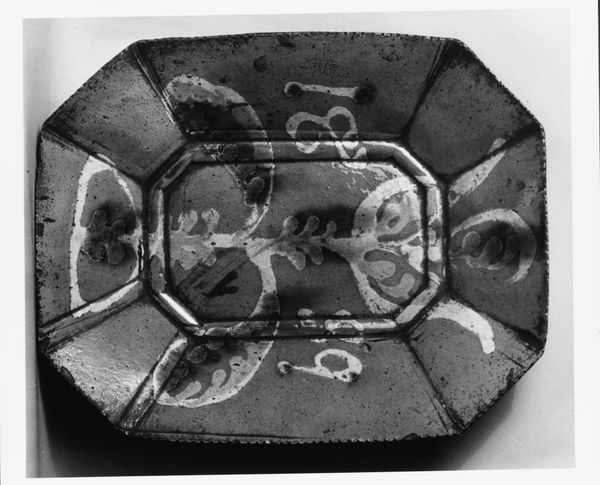
Dimensions: 21 1/2 x 11 1/4 in. (54.6 x 28.6 cm)
Copyright: Public Domain
Editor: This object, simply titled *Fan*, made with tempera in the late 1870s by Fortuné Férogio, is currently at the Met. The complexity and the detail give it such a formal and almost theatrical aura. What do you see when you look at this fan? Curator: The fan form itself is interesting. As an object, fans were historically laden with social and cultural significance, a tool for communication and display. And then we see images layered upon that. Here, figures from what looks like different periods coexist, possibly hinting at both historical grandeur and the continuous, cyclical nature of human experience. The allegorical details act almost like cultural memory. Do you notice the cherubs? Editor: Yes, I see them! Scattered all over. What do they signify to you? Curator: In Western art tradition, they often appear to signify innocence, divine love, but consider that they are framed by scenes of courtship. Could they be ironic commentary on romance, or a reminder of its more playful origins? Think about what the viewer—the fan's user—is also projecting. The fan and these images are co-dependent to the meaning. Editor: That makes so much sense, it's all about context, layering the meanings of each image. Curator: Exactly. We look for a cohesive narrative, but perhaps it’s about fragmented moments echoing across time, each gesture loaded with history and emotional residue. This everyday object, a fan, is carrying centuries. Editor: That reframes it for me entirely, less decorative and more a living symbol. Curator: And isn't that the core of iconography? Seeing past the surface to the weight of our shared visual language?
Comments
No comments
Be the first to comment and join the conversation on the ultimate creative platform.
